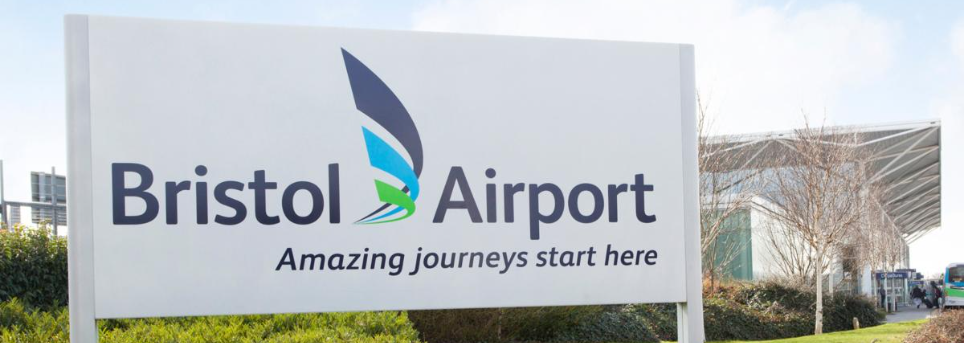The challenge
Bristol Airport (BRS), one of the UK’s fastest-growing airports, had ambitious plans to increase its capacity from around 8 million passengers per annum (MPPA) to 12 MPPA. This significant growth was essential for meeting regional demand and realising the airport’s strategic vision.
However, airport leaders faced a critical challenge: a lack of clear, integrated data on how their existing infrastructure would cope with such a dramatic increase in traffic. They understood that simply scaling up operations was not an option. Without a holistic view of the entire passenger journey—from the kerbside to the runway—any major capital investment would carry significant risk.
The airport needed answers to crucial questions:
- If passenger numbers increased to 12 MPPA with the current infrastructure, where would the breaking points be?
- What would the impact on passenger experience, operational efficiency and airline satisfaction be?
- Which specific infrastructure enhancements would deliver the best return on investment and effectively support the planned growth?
Simulations of a “do nothing” scenario painted a stark picture. Growth to 12 MPPA would result in severe operational bottlenecks, with unacceptable check-in waiting times and security queues during peak periods. Such delays would impact the passenger experience, damage the airport’s reputation and make sustainable growth impossible.
The solution
To navigate this complexity, Bristol Airport partnered with NATS and AiQ, to conduct a comprehensive end-to-end (E2E) Airport Terminal Capacity Assessment. This collaboration brought together NATS’ world-leading expertise in runway and airspace operations with AiQ’s deep knowledge of airside and landside operations including passenger terminal and baggage handling processes.
The team developed a complete, data-driven “digital twin” of the terminal, simulating the entire passenger and aircraft journey.
3D Airport Simulation and Virtual Reality
The core of the solution was a three-phased modelling approach:
Calibration: The team first created a detailed model of the existing operation at 8.1 MPPA. By validating this model against real-world performance data, they established a highly accurate baseline and a “single source of truth” for the entire airport. This initial phase also uncovered a number of “quick wins”—immediate, low-cost operational improvements that could enhance efficiency even before major investment.
Stress-Testing: The calibrated model was then used to simulate the future 12 MPPA passenger demand on the existing infrastructure. This stress-test pinpointed the exact locations and severity of future bottlenecks across kerbside, check-in, security and immigration, quantifying the urgent need for change.
Strategic Enhancement: Finally, the team modelled a third scenario that incorporated Bristol Airport’s proposed infrastructure and technology developments. This included enhancements such as:
- Re-landscaped kerbside and forecourt access.
- A reconfigured check-in hall with multi-user, self-service systems.
- Additional security lanes with improved technology.
- Increased e-gate capacity at immigration.
- Expanded stand capacity.
- Improved airfield flow.
- Airspace modifications to improve capacity and environmental impact on local communities.
By simulating the 12 MPPA demand with these enhancements, the model could accurately predict their collective impact and validate the effectiveness of the airport’s investment strategy.
The benefits
- Validated the Strategic Investment Plan
- De-risked Multi-Million-Pound Decisions
- Provided a Holistic Airport View
- Identified Immediate "Quick Wins"
- Created a Blueprint for Operational Readiness
The end-to-end capacity assessment delivered clear, quantifiable and actionable insights, empowering Bristol Airport to move forward with its growth plans with confidence.
Validated the Strategic Investment Plan: The study proved that the proposed enhancements would successfully accommodate 12 MPPA, alleviating the predicted congestion. The modelling showed that with the new infrastructure in place, major queues at check-in and security would be effectively eliminated, preserving the passenger experience.
De-risked Multi-Million-Pound Decisions: By testing the proposed capital expenditure in a virtual environment, the airport could be certain that its investments were targeted at the right areas, ensuring the most effective use of funds and preventing costly missteps.
Provided a Holistic Airport View: The E2E approach broke down traditional silos between airside and landside operations. It revealed the critical interdependencies between different processes, such as how a faster check-in process would increase passenger flow into the departure lounge, highlighting the need for adequate seating and retail capacity.
Identified Immediate “Quick Wins”: The detailed analysis of the current state uncovered numerous opportunities for immediate, low-cost operational improvements. Recommendations for improved signage, optimised staff deployment, and minor process changes delivered instant value and enhanced passenger flow without requiring major capital outlay.
Created a Blueprint for Operational Readiness: The project provided a clear roadmap for the future, giving stakeholders from ground handlers to air traffic control a shared understanding of the resources and operational changes needed to support growth, ensuring the entire airport ecosystem could scale up seamlessly.
Ultimately, the partnership with NATS and AiQ provided Bristol Airport with more than just data; it delivered the strategic confidence to build for the future, ensuring a world-class experience for the 12 million passengers to come.
As a result of this project AiQ won the Airport Operators Association Best Solution Provider 2019.
What the client says
Andrew Goodenough – Development Director, Bristol Airport
“To support our ambitious expansion plans, we instructed NATS and AiQ Consulting to assess the current and future capacity of the whole Bristol airport operation, focusing on the experience from our passengers’ perspective. The result was an independent report that helped to validate our investment plans and identified some immediate opportunities for us to improve that will ensure the safe and efficient growth of the operation.
Thanks to the report we are satisfied that the airport’s growth targets are on track and are equipped to work on the areas that really need it. Working with an experienced third party has enabled us not only to engage with our key stakeholders, but also to affirm our future investment decisions. The collaboration between NATS and AIQ Consulting provided us with a unique integrated airside and landside view of our airport, highlighting the strong connections between the different areas of airport operations.
We are delighted with the work NATS and AiQ have undertaken and look forward to working with them on more projects in the future.”
Our operational and analytical experts are dedicated to analysing, modelling and optimising every aspect of an airport. Specialising in airport capacity, we are trusted to realise capacity and solve complex operational challenges. For more information about how we can assist you with any of your challenges in 2025 and beyond, contact us today.

